Kinematic reconstructions of the western Mediterranean.
From Dewey et al., 1989.
Back
Click for larger images
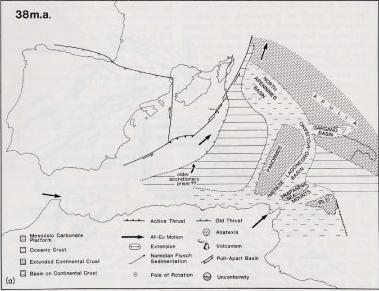
(a) Corsica, Sardinia, and the Balearic Islands have been restored against the French and Spanish coasts. The African margin consisted of a series of carbonate platforms and basins. As time progresses, these older basins will close and deformation of the carbonate platforms occurs as Corsica, Sardinia, and the Balearic Islands translate to the SE.
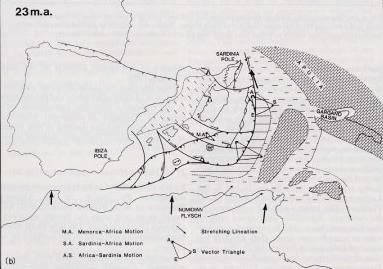
(b) By this time, extensional tectonics are evident throughout the region. Sardinia has begun to drift away from the French mainland. Compression is also taking place in the northern Apennines. Much of the older oceanic crust has been subducted or obducted. Subduction is accompanied by abundant calc-alkaline volcanism in western Sardinia and southeastern France.
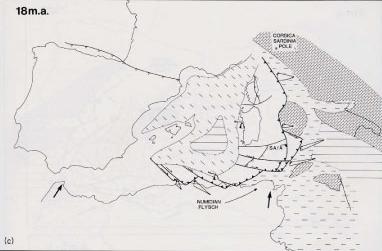
(c) Corsica and Sardinia have completed their rotation around a combined pole. The final consumption of the NeoTethys has led rapidly to a collision between the Liguride accretionary wedge and the Panormide Platform.
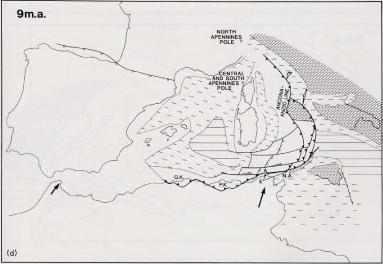
(d) Compression continues throughout the Apennines. The Apenninic thrusting is accompanied by the formation of a continuous foredeep in front of the chain. East of Corsica and Sardinia, stretching has begun in what will be the Tyrrhenian Sea.
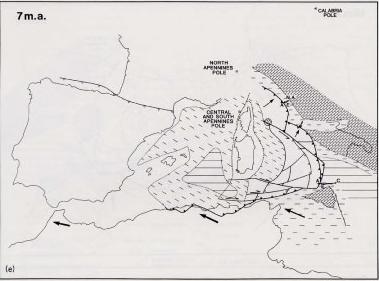
(e) Africa's motion is now directed to the NW. This enhances extension in the Tyrrhenian as well as in basins south of Sicily. In the northern Apennines, deformation has largely ceased, allowing the emplacement of the Elba granite.
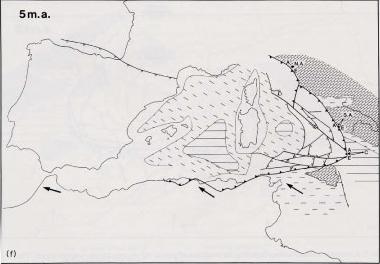
(f) The Messinian Salinity Crisis - the Mediterranean dessicated completely, resulting in the deposition of evaporites throughout the Mediterranean and the Apennine foredeep.
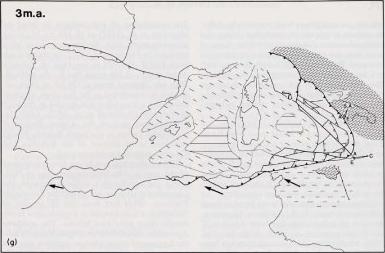
(g) The Tyrrhenian basin continued to form as the locus of extension moved to the SE. Intramontane grabens developed in the Calabrian Arc and southern Apennines by back-arc extension, gravity collaps of over-thickened crust, and strike-slip mechanisms.
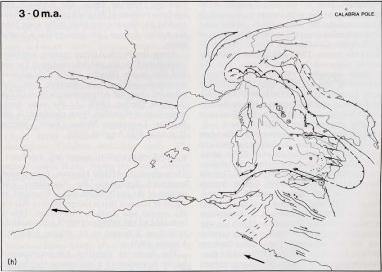
(h)